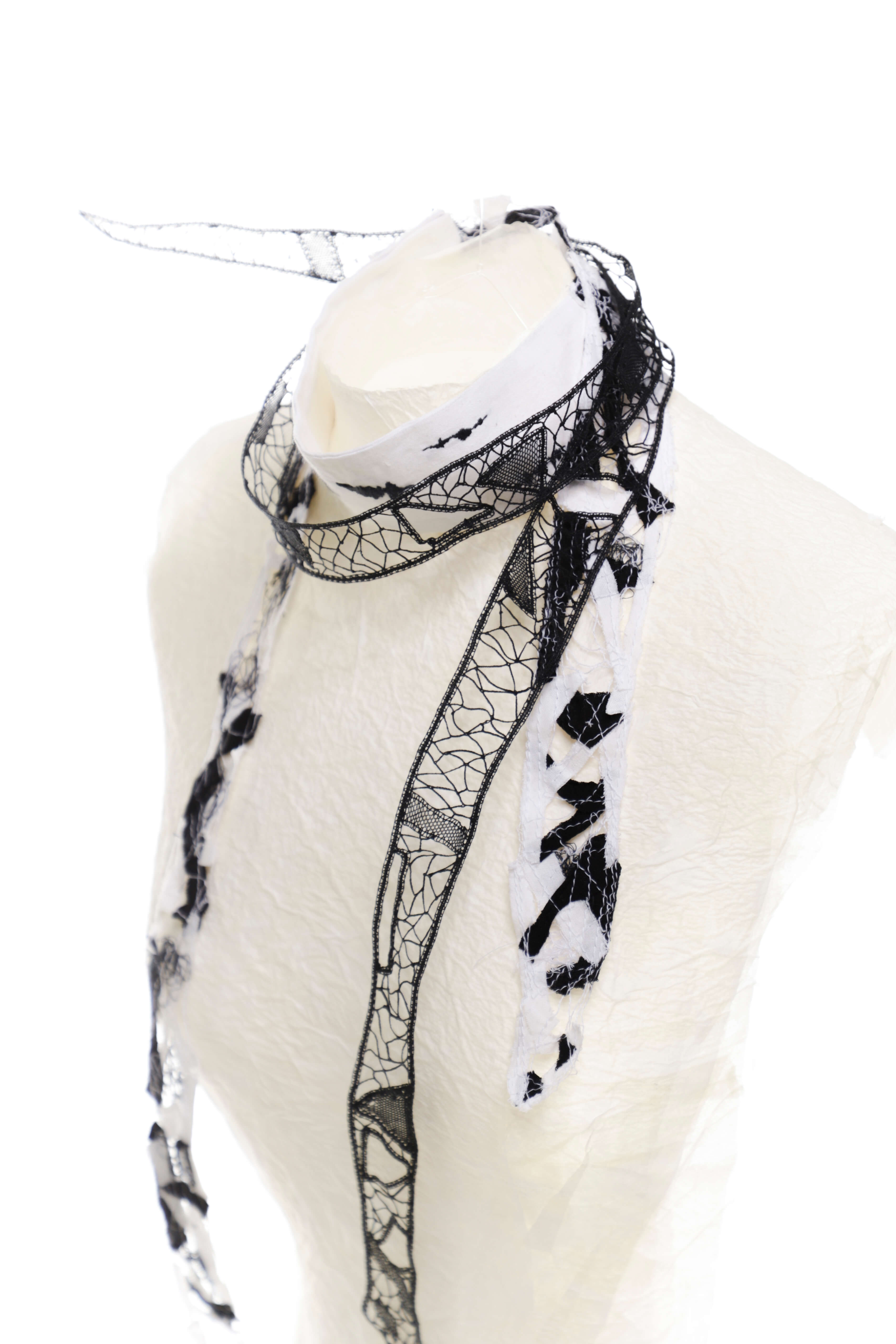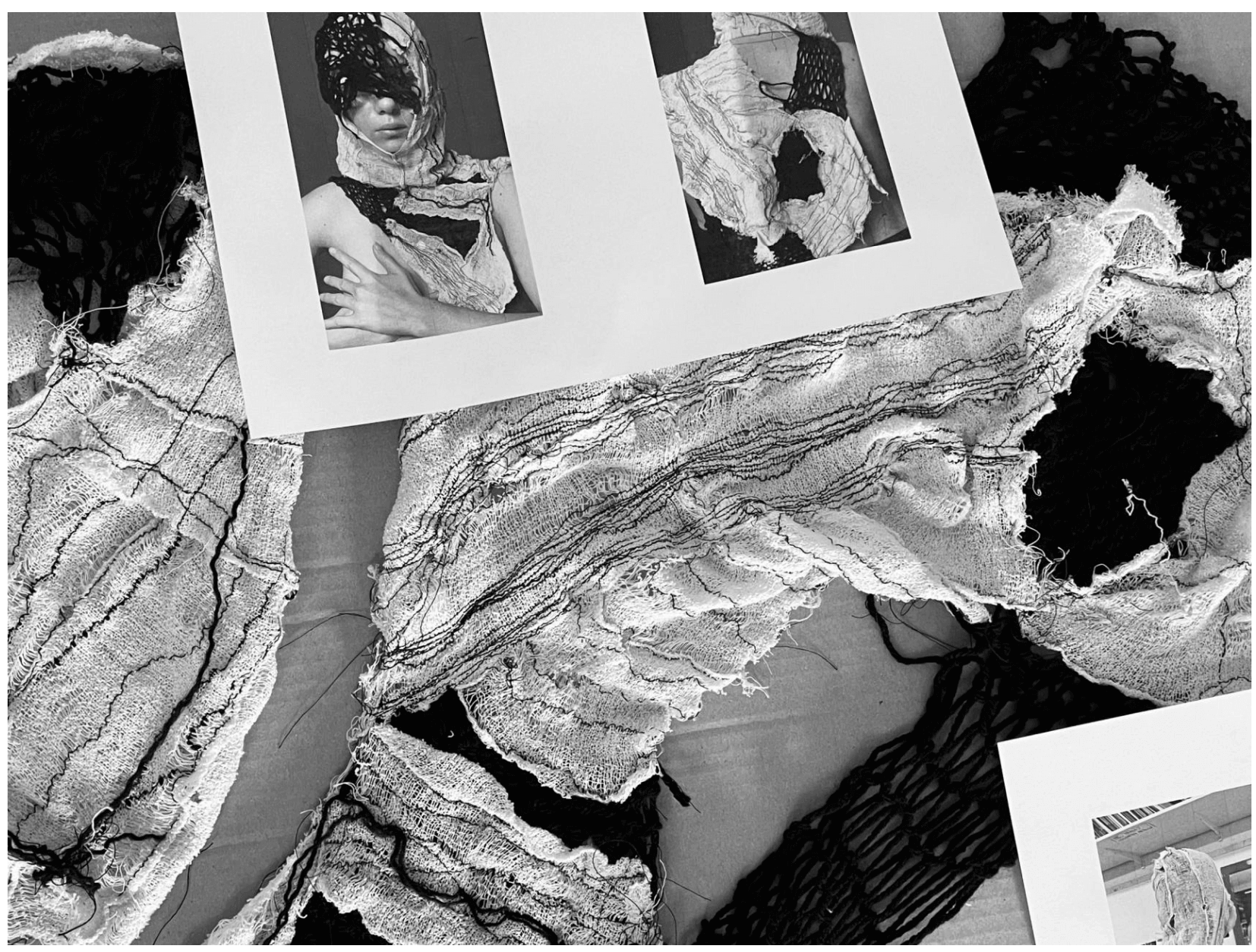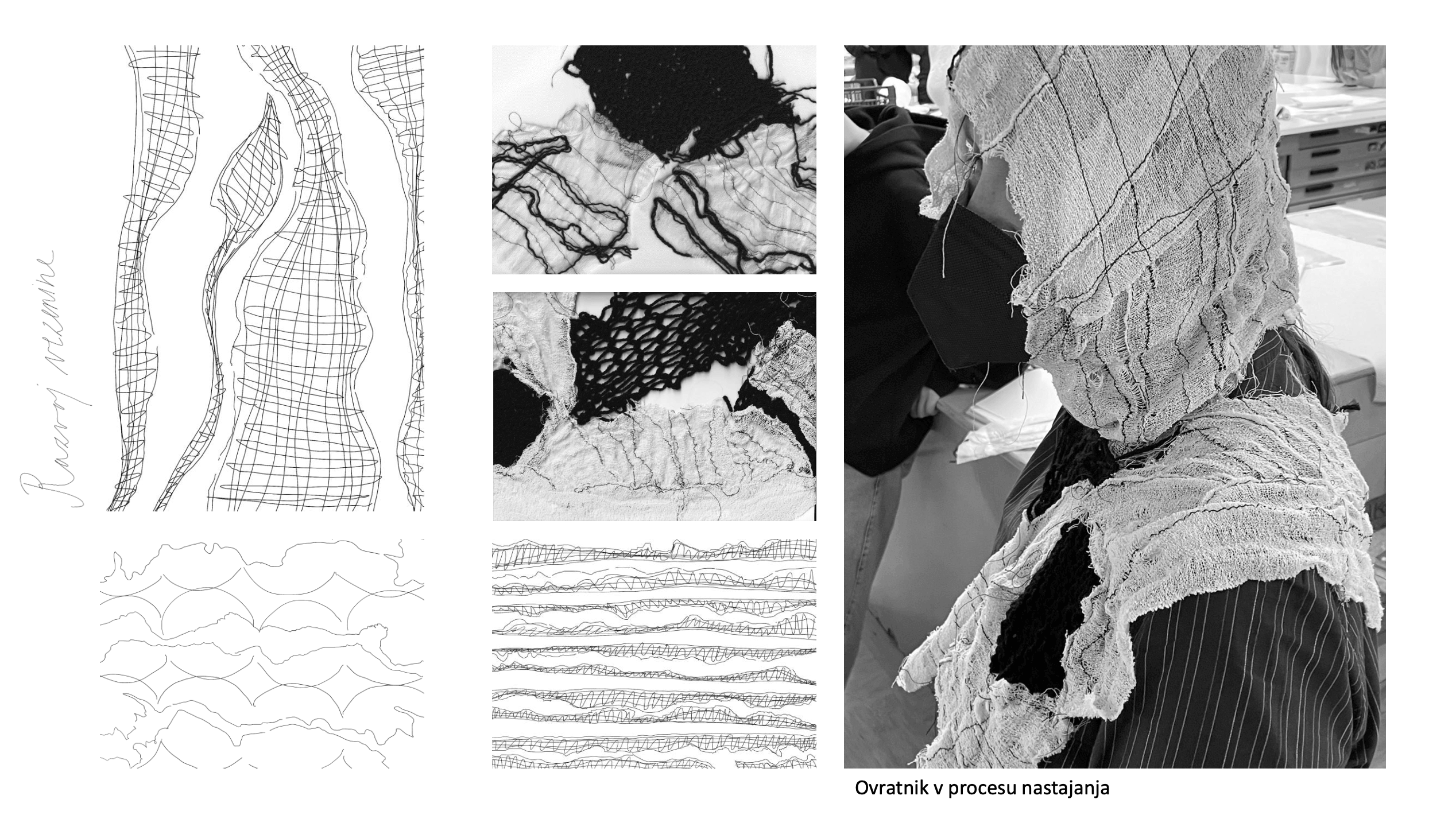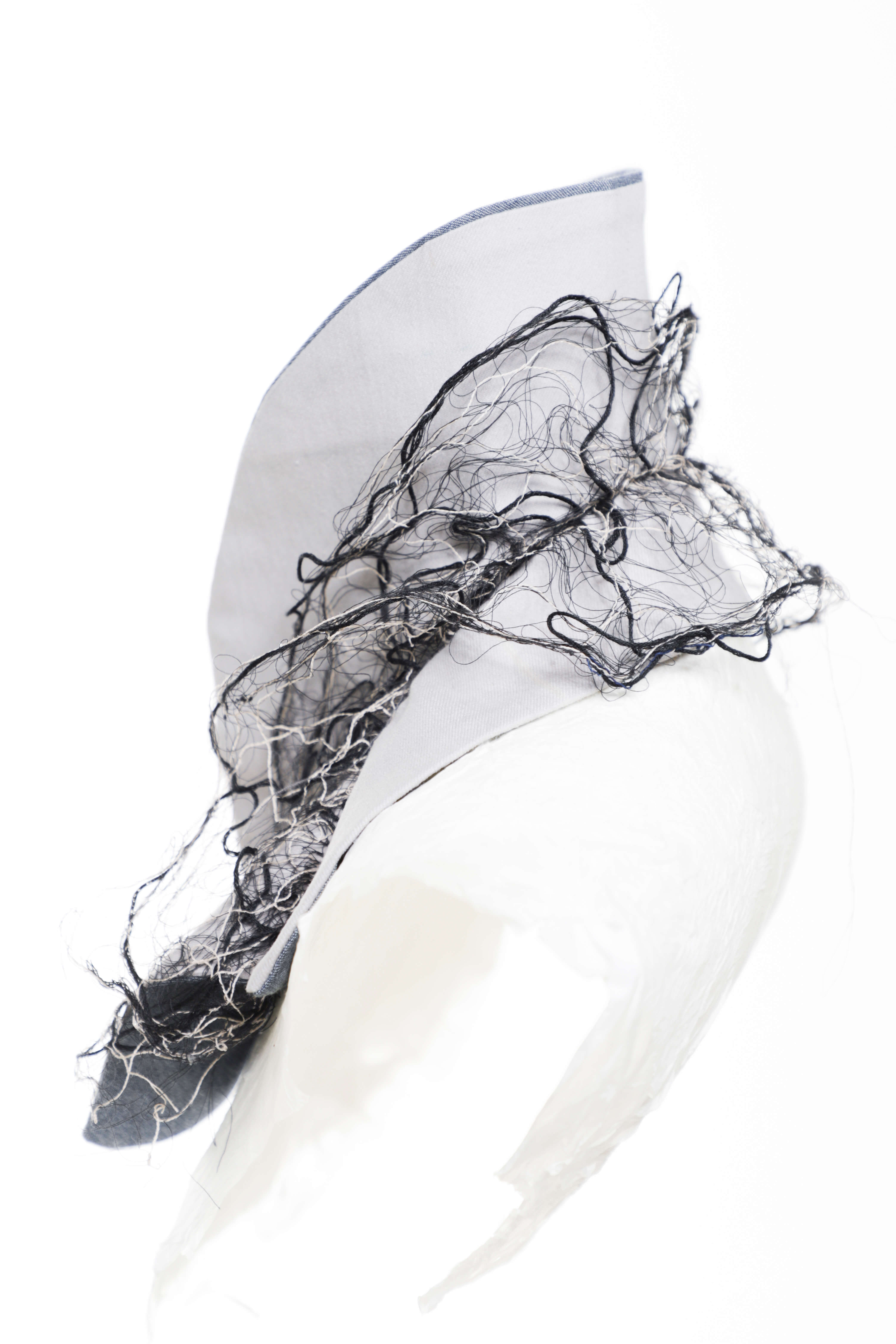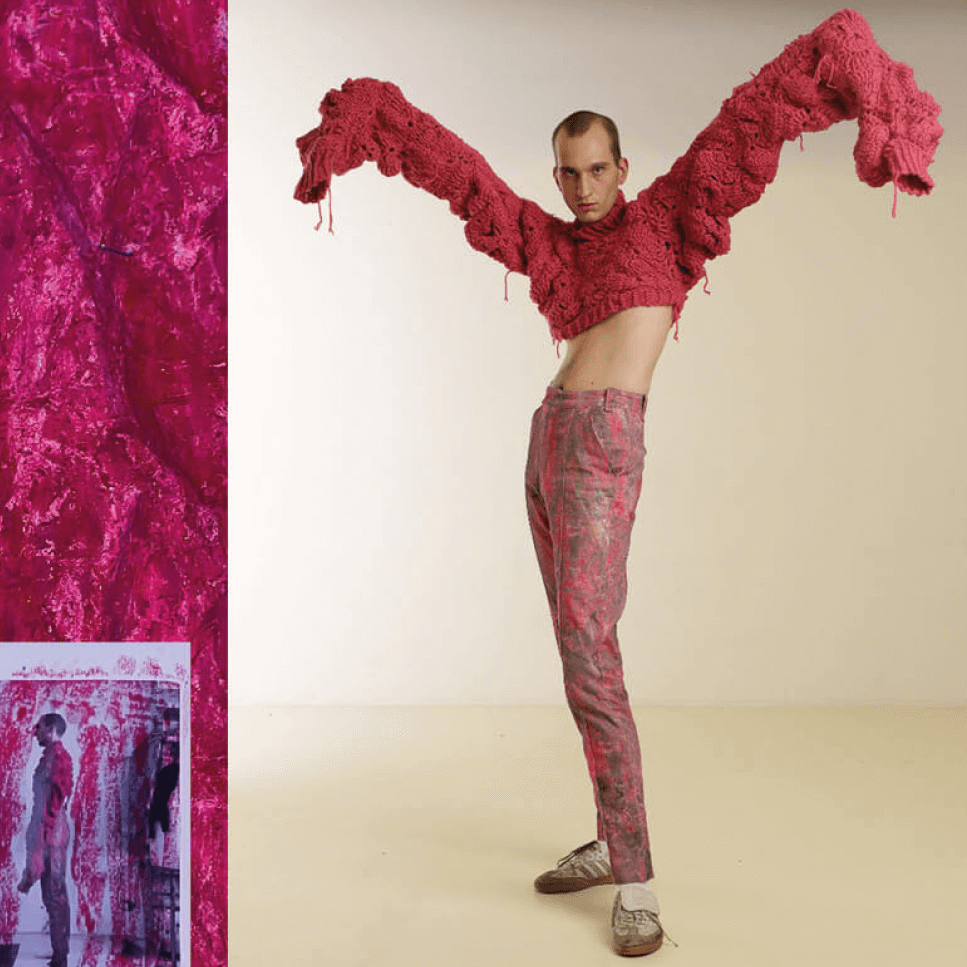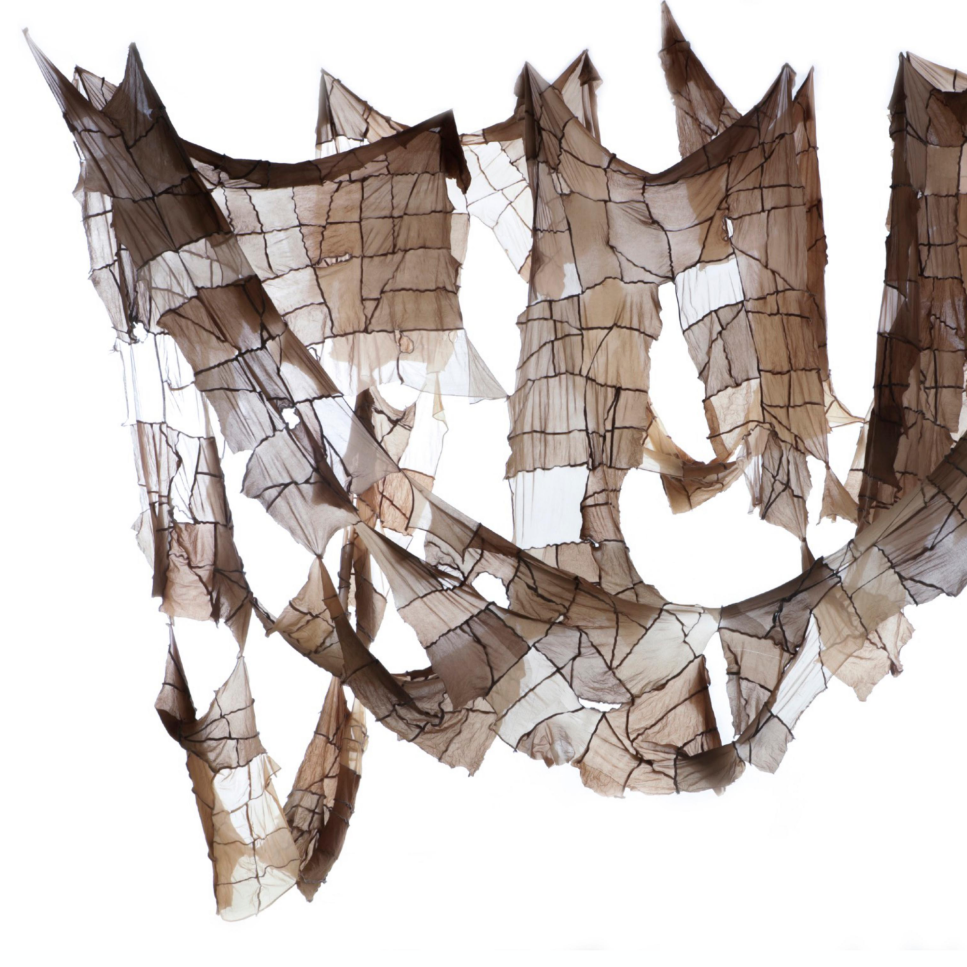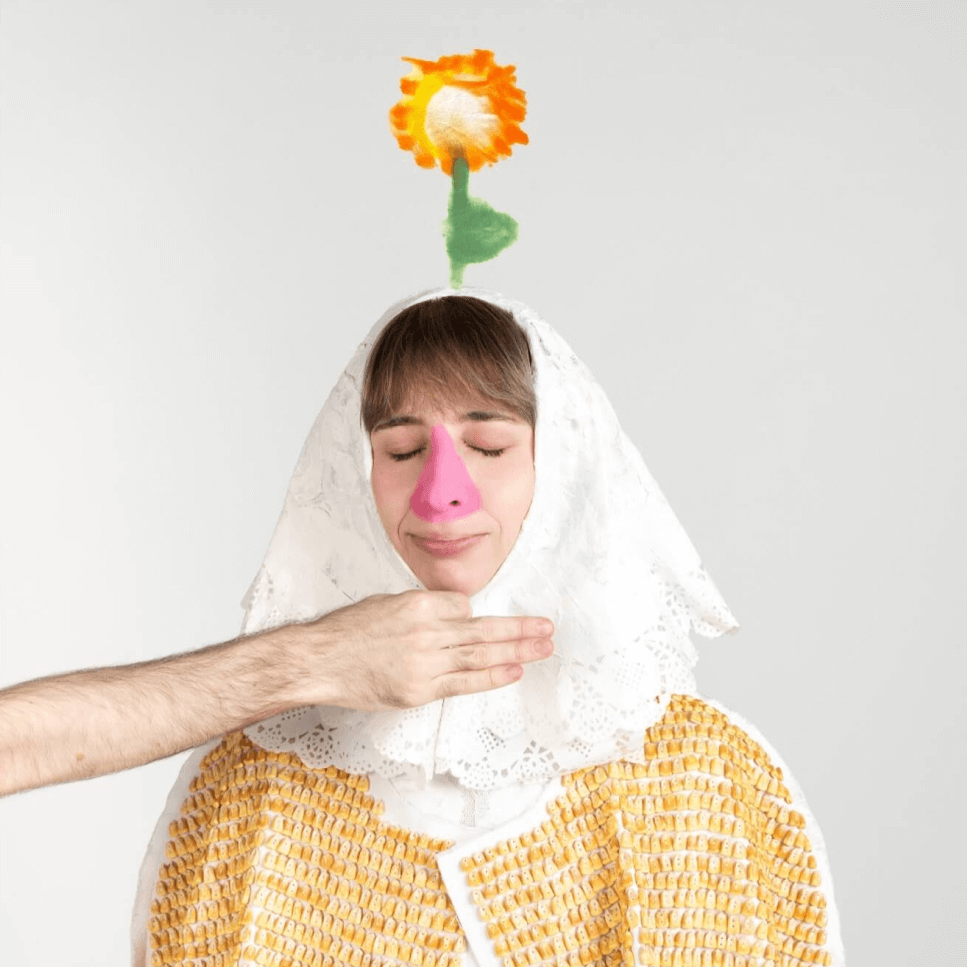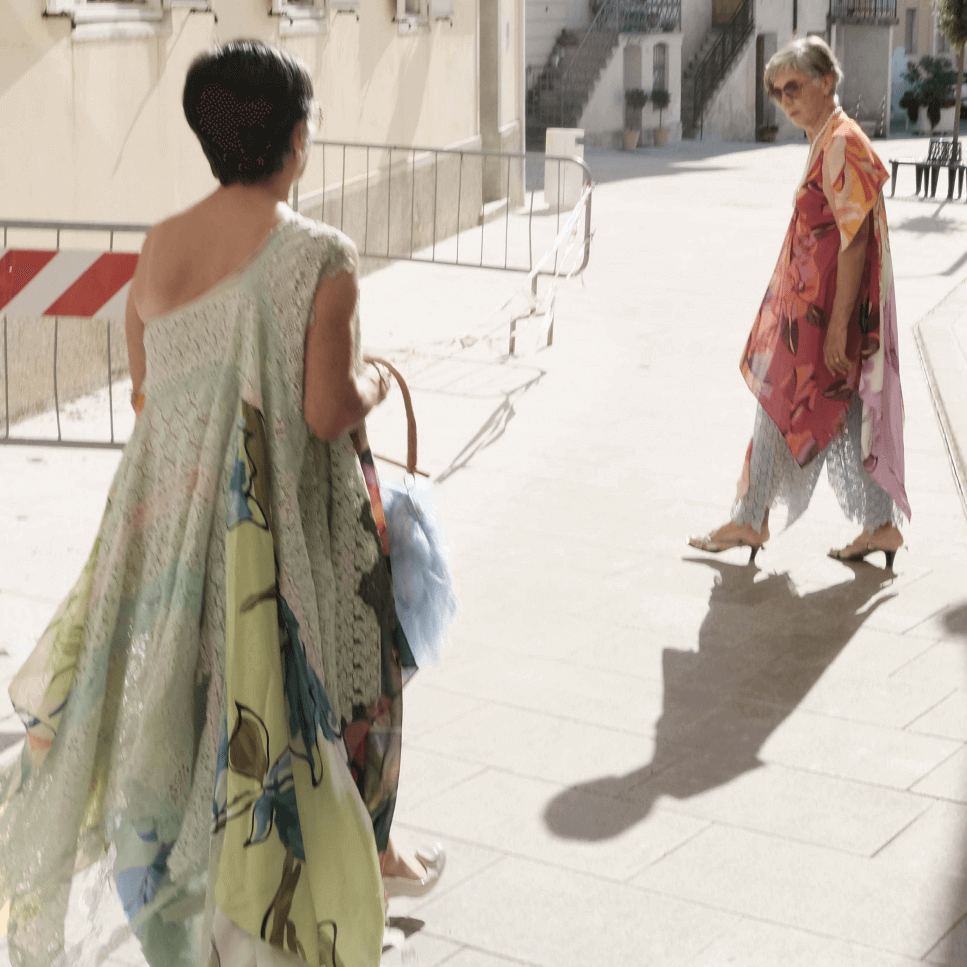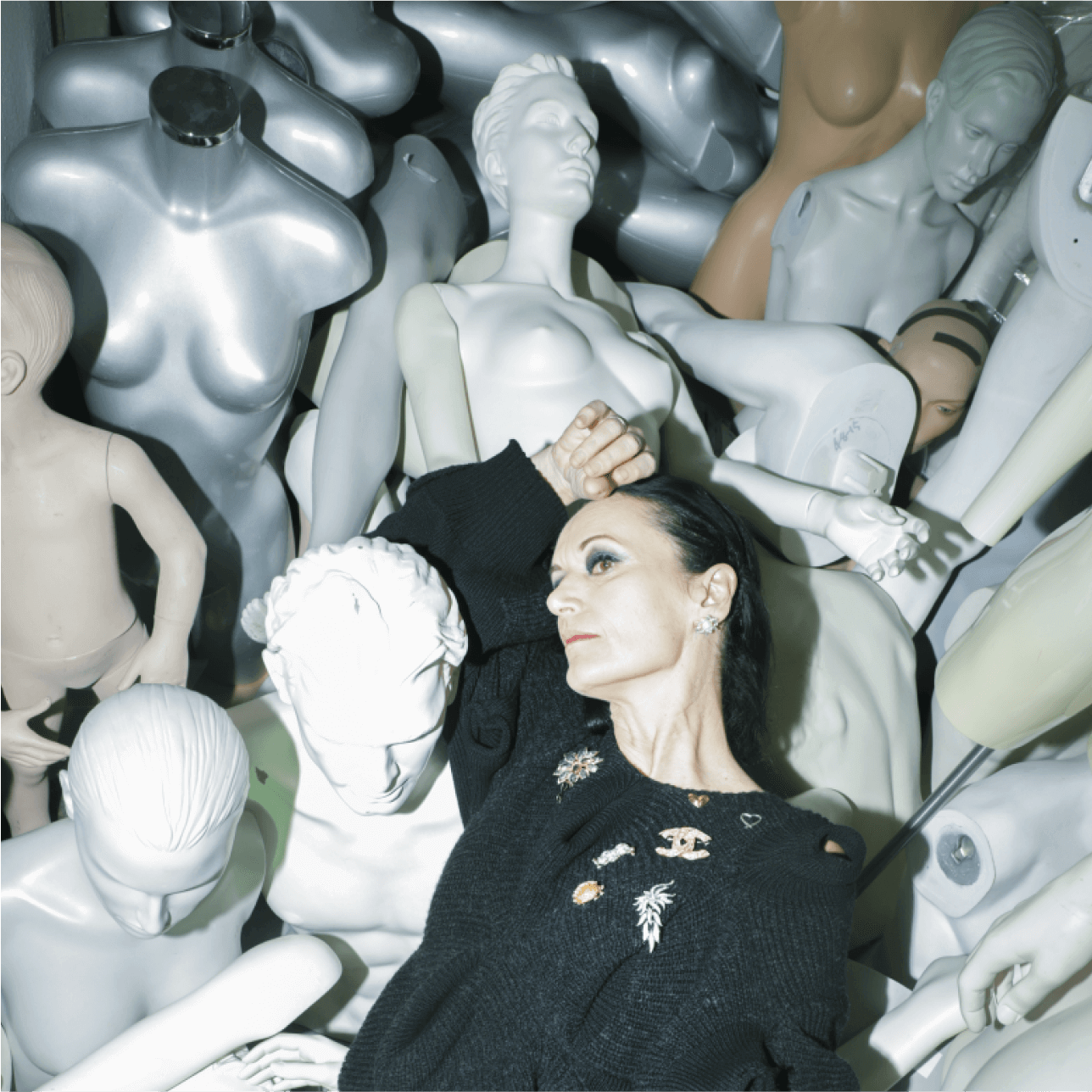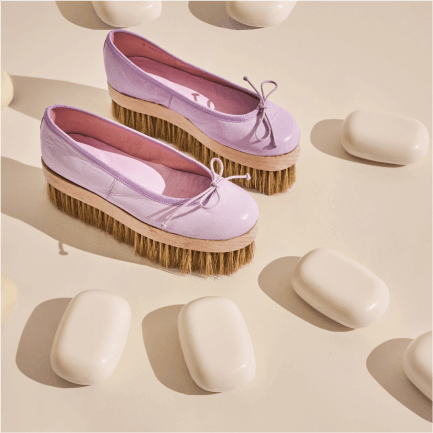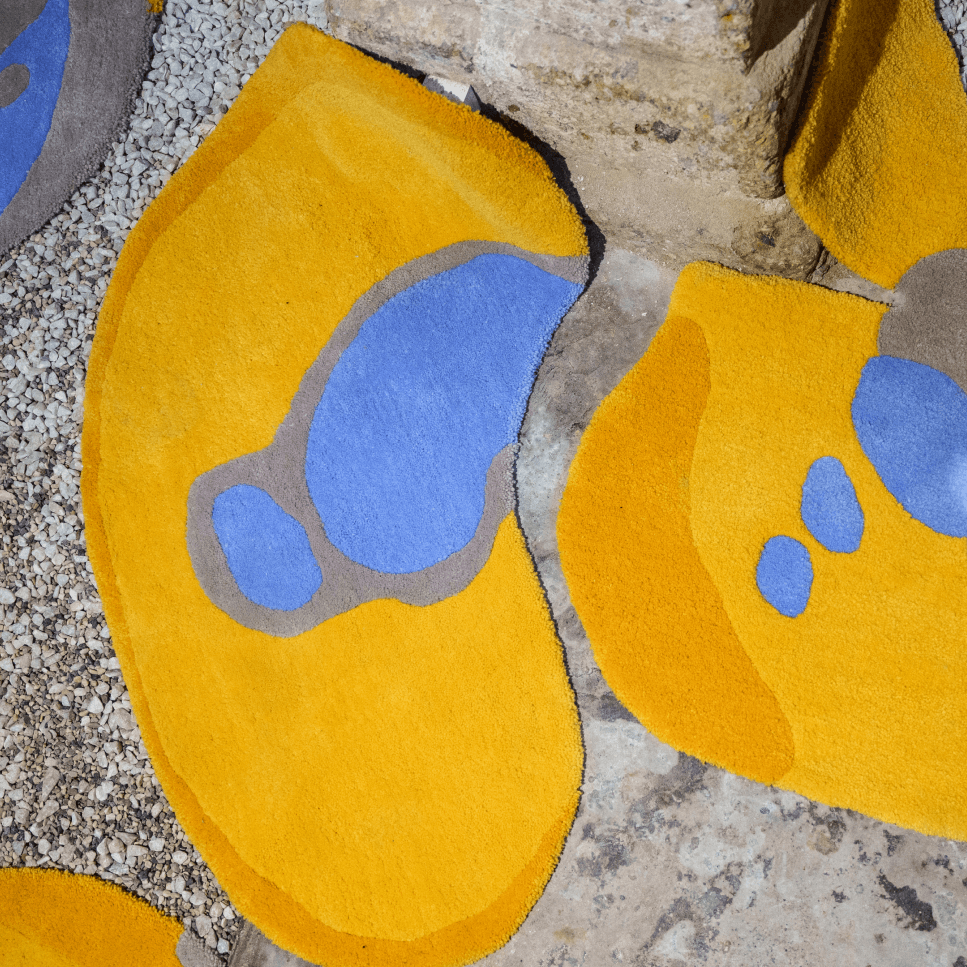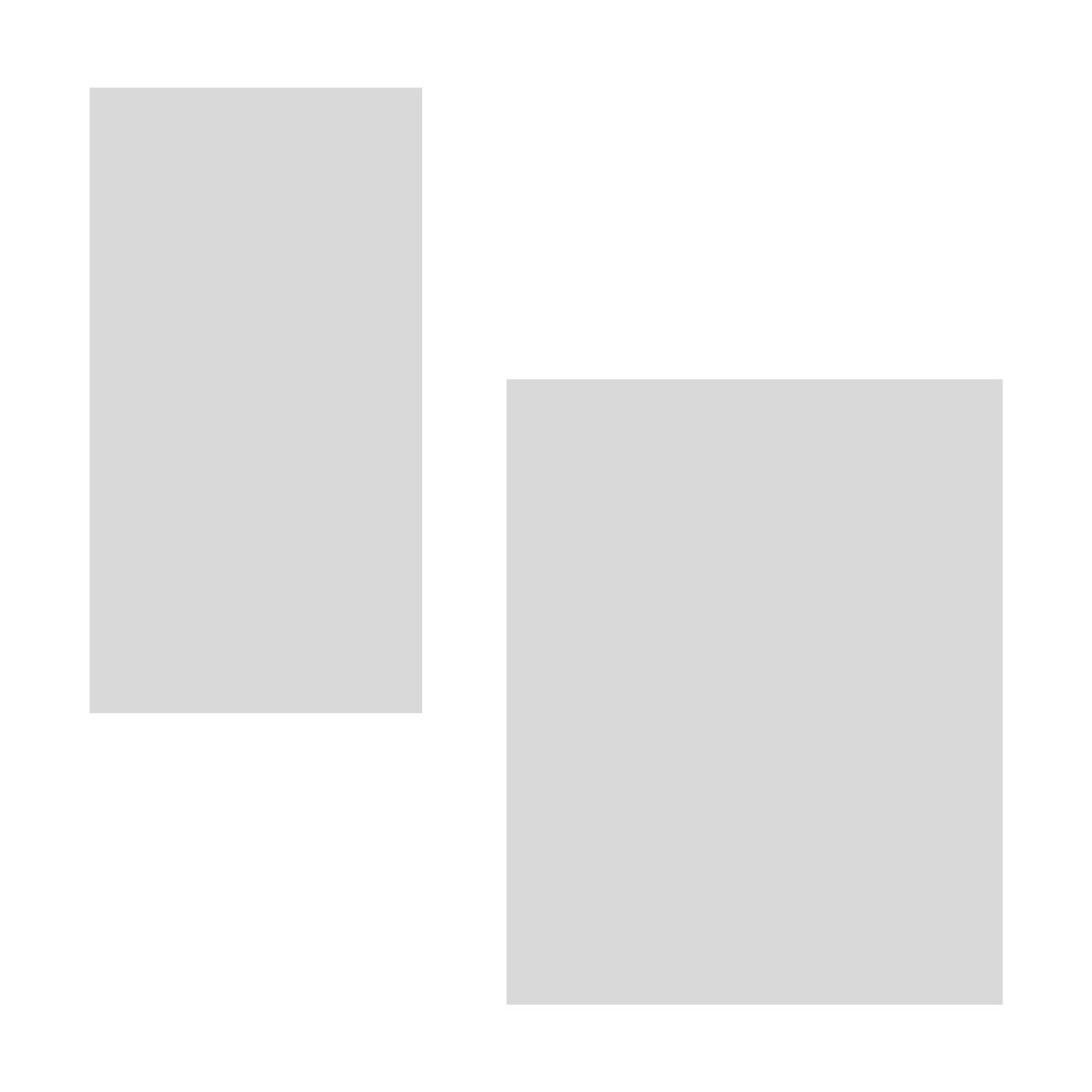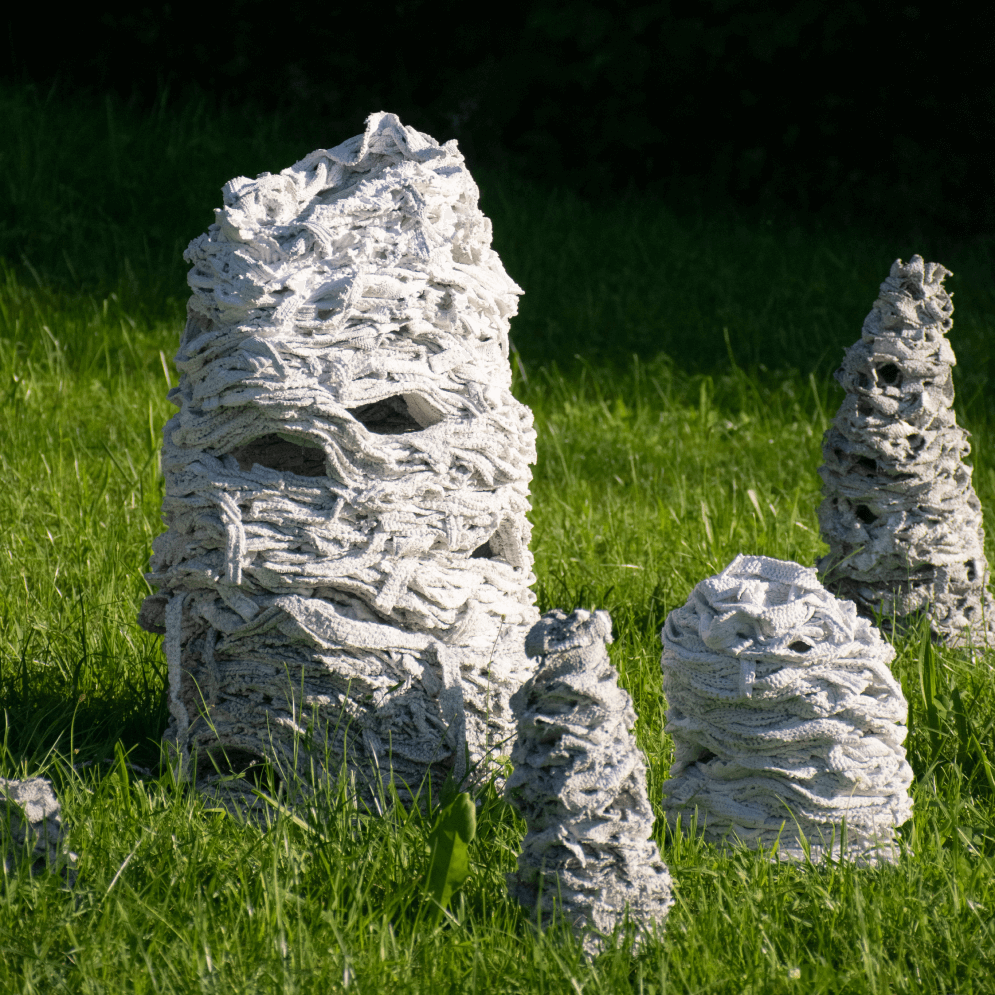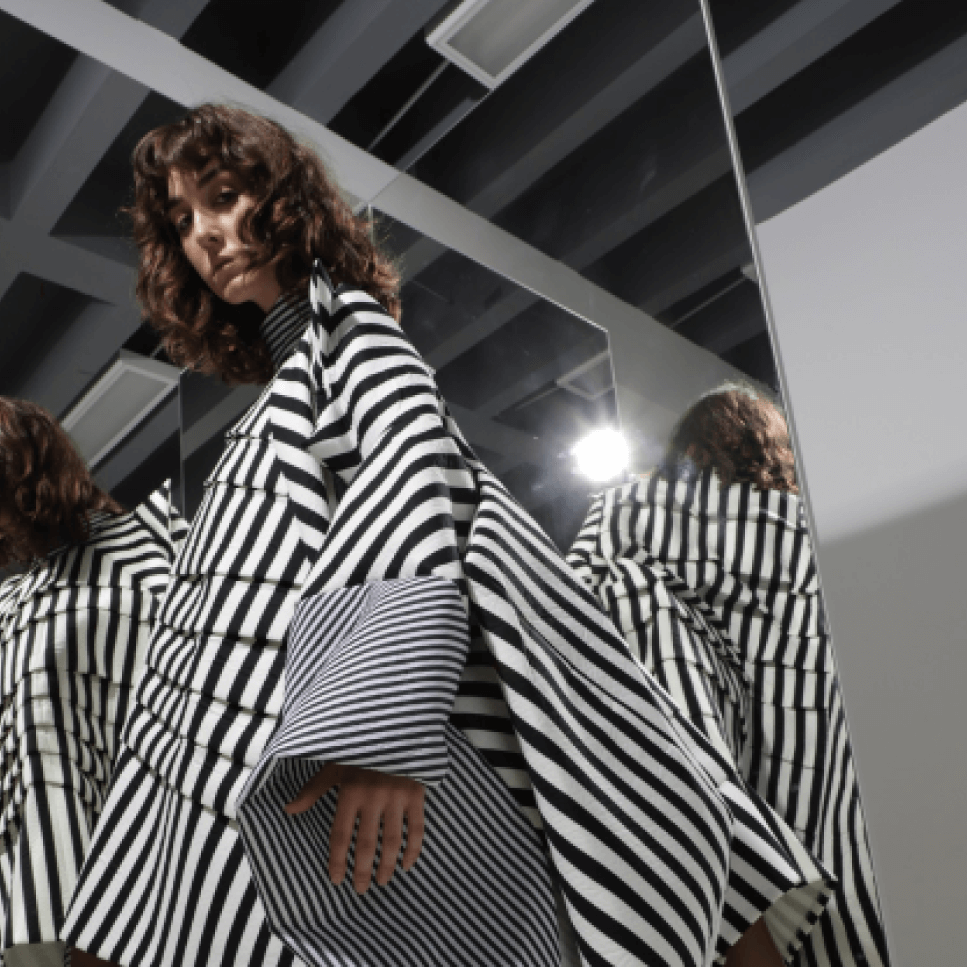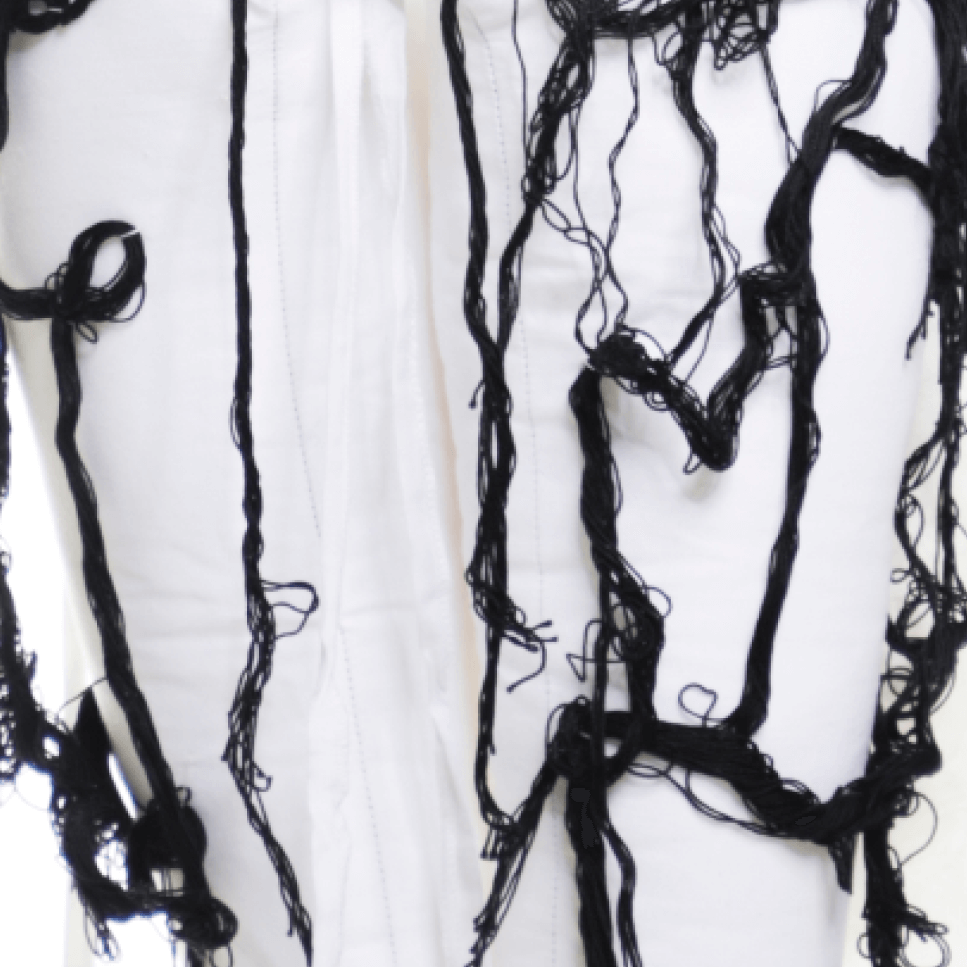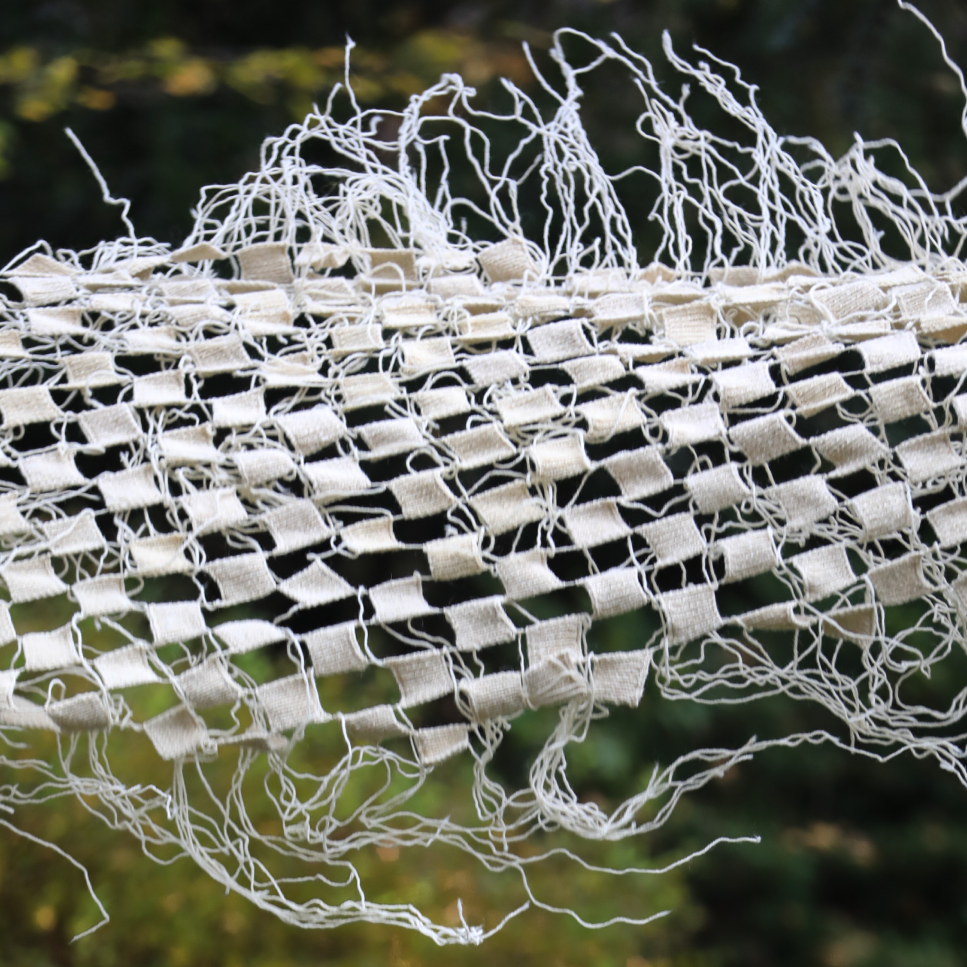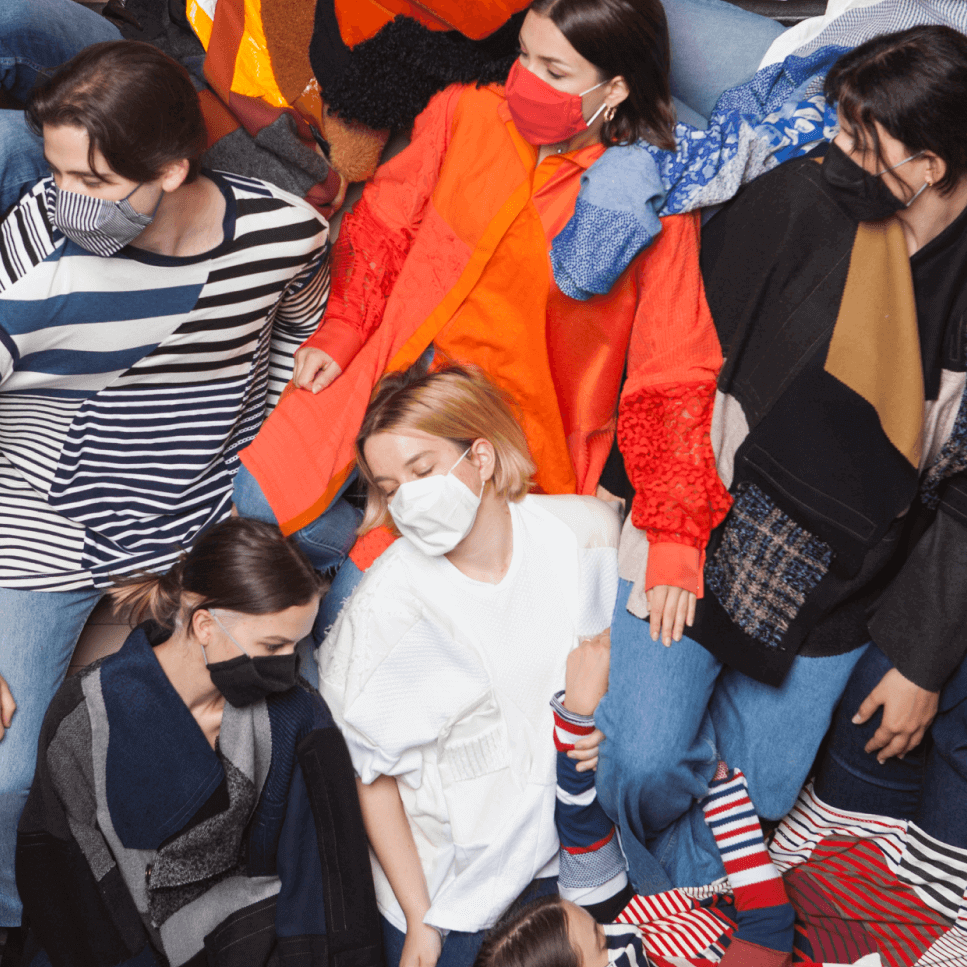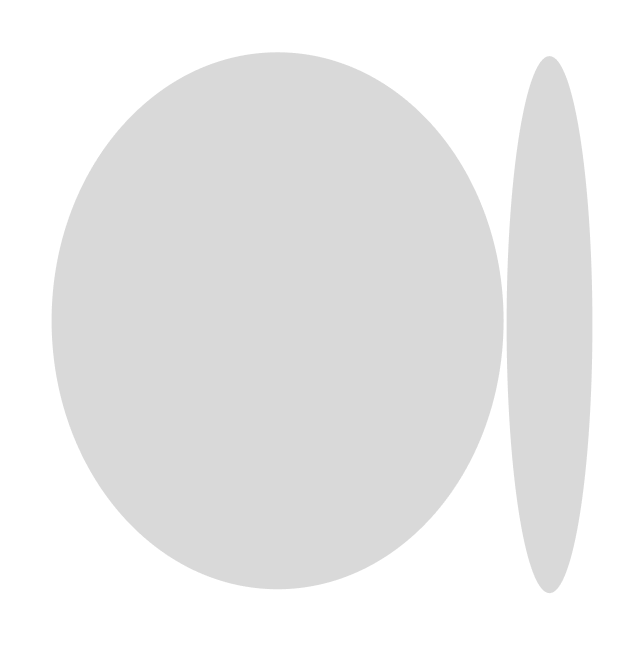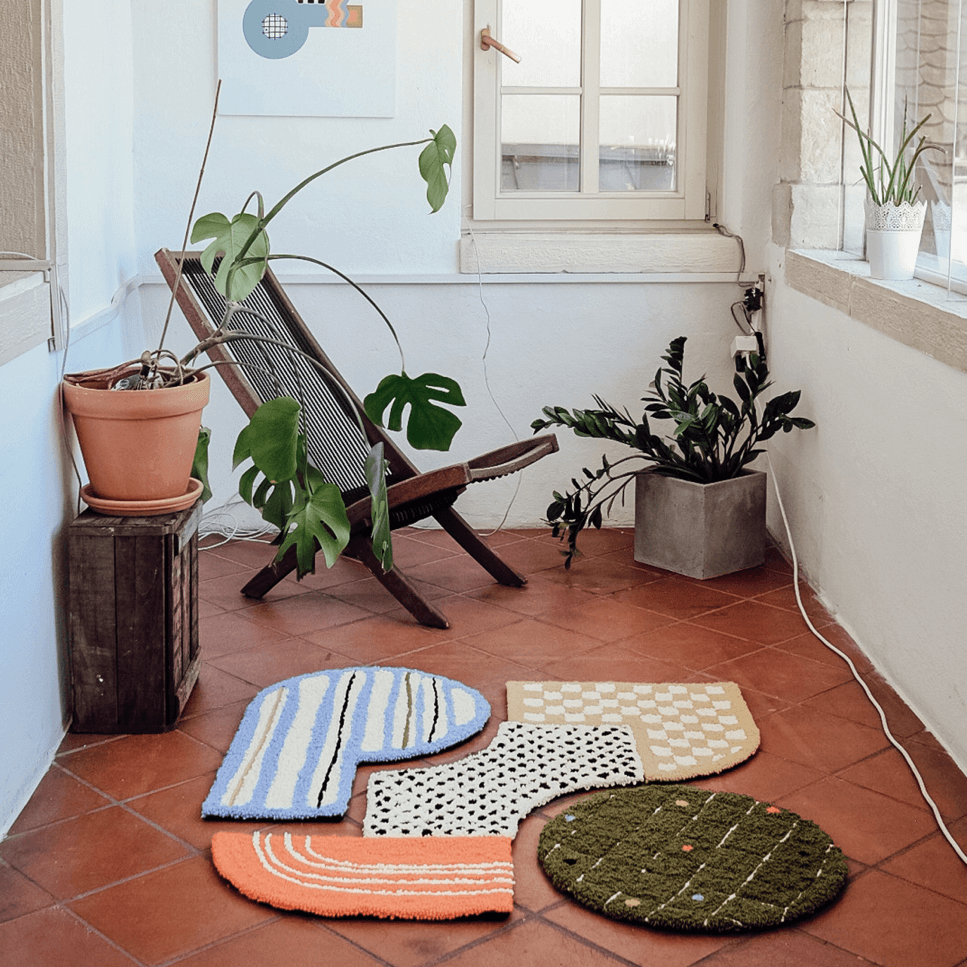Inspired by Lamut: Ovratniki
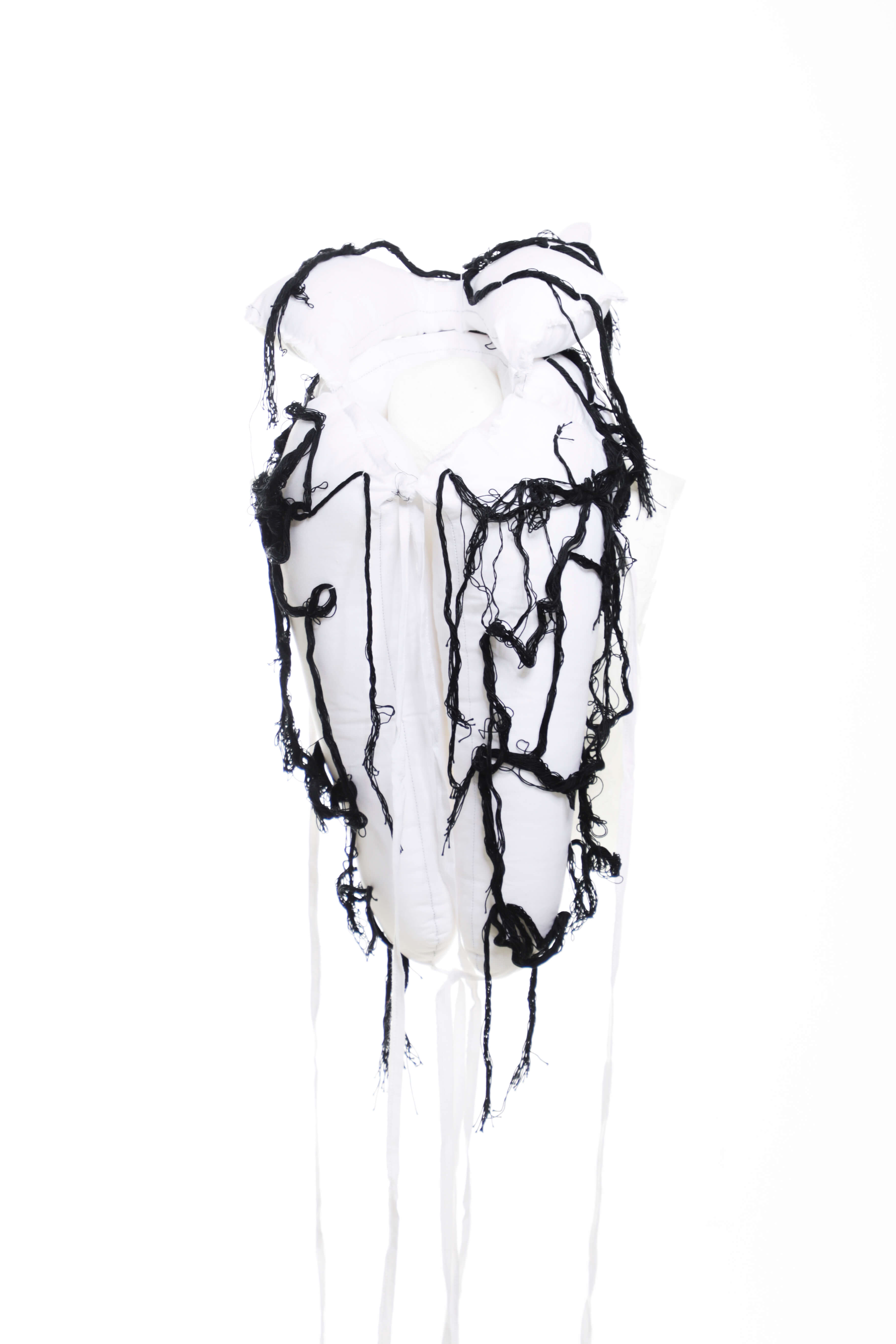
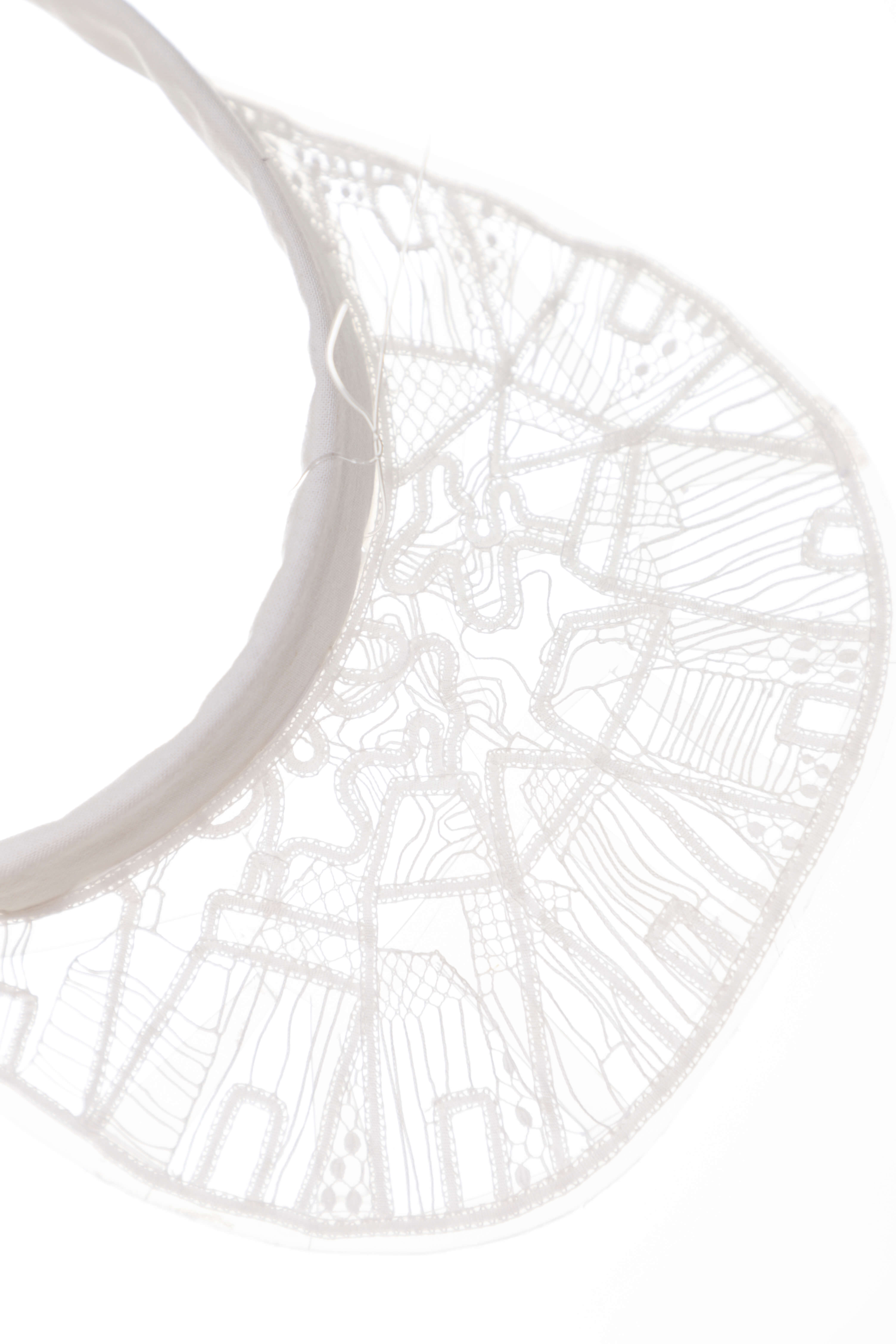
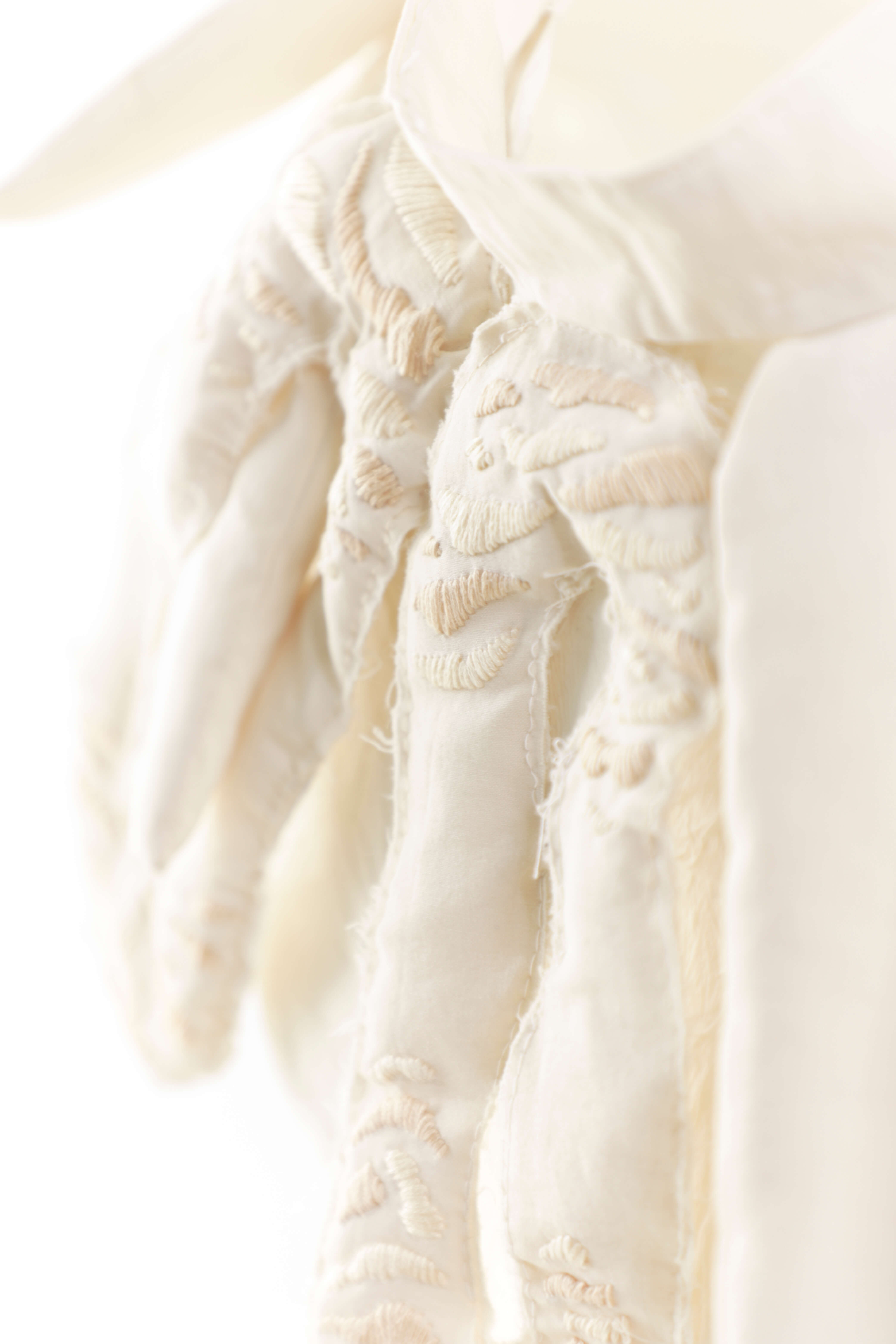
Avtorji: študenti 1. letnika OTO / Mentorici: prof. Marija Jenko, asist. mag. Arijana Gadžijev / Tehniška sodelavka: Nina Glavič / Klekljarice: Marija Novak Boškovič, Mira Guzelj, Valerija Krivec, Marija Kosmač, Vera Kostanjšek, Anica Uršič, Anica Loverčič, Marta Logar, Milena Kalan Frančeškin, Teodora Klavžar / Foto: Marijo Županov, Boštjan Pucelj / 2022
Inspired by Lamut: Collars (group project) Authors: students of 1st year of the Chair of Textile and Fashion Design (OTO) / Mentors: Prof. Marija Jenko, Tch. Asst. Arijana Gadžijev / Technical assistant: Nina Glavič / Lacemakers: Marija Novak Boškovič, Mira Guzelj, Valerija Krivec, Marija Kosmač, Vera Kostanjšek, Anica Uršič, Anica Loverčič, Marta Logar, Milena Kalan Frančeškin, Teodora Klavžar / Photo: Marijo Županov, Boštjan Pucelj / 2022
Ker so želeli zanimanje za likovno umetnost in življenje novomeškega slikarja in grafika Vladimirja Lamuta približati tudi mlajši generaciji, so iz Dolensjkega muzeja povabili k sodelovanju Katedro za oblikovanje tekstilij in oblačil Naravoslovnotehniške fakutlete Univerze v Ljubljani. Po letu dni trajajočem projektu so študenti »s spoznavanjem umetnikovega likovnega ustvarjanja skozi dela, ki jih hrani Dolenjski muzej, svoje občutke, zaznavanja in vtise prelili v materijo in izdelali fascinanten nabor prototipov ter končnih izdelkov, ki nosijo povedni naslov Navdih │ Inspired by Lamut«, kot je v predgovoru k razstavi povedala direktorica Dolenjskega muzeja Jasna Dokl Osolnik. Nastali izdelki in koncepti so bili kot spremljajoča razstava osrednji razstavi – Vladimir Lamut Prelomi, v Dolenjskem muzeju na ogled do konca leta 2022.
They wanted to arouse interest in fine arts and the life of the painter and printmaker from Novo Mesto Vladimir Lamut among the younger generation, so the Museum of Dolenjska invited the Chair of Textile and Fashion Design at the Faculty of Natural Sciences and Engineering, University of Ljubljana, to collaborate. After a year-long project, the students “poured their feelings, perceptions, and impressions of the artist’s creative work that is held by the Museum of Dolenjska into the matter, creating a fascinating range of prototypes and final products titled Inspired by Lamut” as stated by Jasna Dokl Osolnik, the director of the Museum of Dolenjska, in the preface to the exhibition. The resulting products and concepts were on display at the Museum of Dolenjska until the end of 2022 as an accompanying exhibition to the main exhibition, Vladimir Lamut Prelomi.
Slikarski, predvsem pa grafični opus Vladimirja Lamuta, ki ga je v svoji zreli fazi usmeril k izvirnemu ustvarjanju abstraktne likovne umetnosti, je vsakega izmed devetnajstih študentov navdušil drugače, čeprav so vsi oblikovali na isto temo – ovratniki kot samostojni modni dodatki. Lamutove abstraktne likovne prvine so prenesli v značilnosti tekstilnih materialov, ki so jih oplemenitili z vezeninami in drugimi ročnimi tekstilnimi tehnikami, kot so kvačkanje, pletenje, prešivanje ali krpaž. Skupino ovratnikov pa so po Lamutovih motivih, ki so jih študenti poustvarili v svojih risbah, obogatile tudi klekljane čipke, virtuozno delo idrijskih čipkaric. Oblike ovratnikov so izpeljanke od klasičnih belih do nenavadnih prostorskih tvorb, ki lahko tudi precej spremenijo silhueto telesa, nosilca ovratnika. Tekstilni materiali, iz katerih so ovratniki narejeni, pa so naravni, večinoma vzeti iz najdenih ostankov ali starih oblačil in drugih tekstilnih izdelkov.
Vladimir Lamut’s painting and especially graphic oeuvre, in his mature phase, turned to the creation of abstract fine art, inspiring each of the nineteen students differently, even though they all designed on the same theme - collars as independent fashion accessories. They transferred Lamut’s abstract artistic elements to the characteristics of textile materials, which were dignified with embroideries and other hand-textile techniques such as crocheting, knitting, quilting or patchwork. A group of collars was enriched with Idrija lace, virtuously crafted by Idrija lacemakers and based on Lamut’s motifs that the students recreated in their drawings. The shapes of the collars are derivatives of classic white to unusual spatial formations, which can also significantly change the silhouette of the body of the wearer of the collar. The textile materials used for the collars are natural, mostly taken from found remnants or old clothes and other textile products.
Projekt Ovratniki sicer izhaja iz uporabnega oblikovanja, a nekateri ovratniki so bolj nosljivi kot drugi, ki odkrito stopajo v dialog z Lamutovo abstraktno umetnostjo. Zdi se, da je skupina v prostoru lebdečih ovratnikov s svojimi gostimi temnimi ali svetlimi telesninami izzivalno izstopila iz nenavadnih, organsko homogenih Lamutovih grafičnih listov, a študenti so jih dejansko ustvarjali pod tem vtisom.
The Collars project originates from applied design, but some collars are more wearable than others, openly engaging in a dialogue with Lamut’s abstract art. The group of in-space floating collars, with their dense dark or light volumes, seems to have provocatively stepped out of Lamut’s unusual, organically homogeneous graphic sheets. Still, the students were creating them under this impression.

